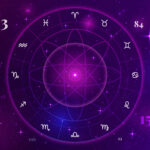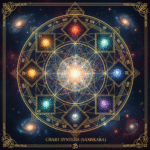As a branch of Jyotish, Prashna (Horary Astrology) and the Janma Kundali (Natal or Birth Chart) are both tools for divination, but they operate on fundamentally different scales and with opposing time anchors. While the natal chart is a wide-angle lens focused on a person’s entire lifetime, the Prashna vs birth chart is a microscope focused purely on the ‘DNA’ of a single question.
Understanding this difference is crucial for any seeker of astrological guidance. It allows us to determine when to use the overarching wisdom of the natal chart and when to deploy the surgical precision of prashna vedic astrology.
Key Difference 1: The Anchor Point in Time
The most profound distinction lies in the moment that “gives birth” to the chart.
| Feature | Prashna (Horary) Chart | Natal (Birth) Chart |
| Focus Keyword | Prashna vs. Birth Chart | prashna vedic astrology |
| Anchor Point | The exact moment the question is asked and understood by the astrologer. | The exact moment of the querent’s birth. |
| Chart’s Subject | The Question itself. The query is treated as a living entity with its own fate. | The Individual (The native). The chart is a blueprint of the soul’s karmic journey. |
| Applicability | Specific and Immediate. Answers a single, urgent, time-bound question (e.g., “Will I get the job this month?”). | Broad and Evolutionary. Covers the entire life, from character and destiny to major life periods. |
| Requirement | No birth details needed. Uses the Current Time and Location of the question. | Requires Accurate Date, Time, and Place of Birth. |
OREO Framework: Prashna’s Temporal Focus
Opinion: The Prashna chart works because it adheres to the principle of instantaneous reflection: the universe perfectly mirrors the moment of sincere query.
Reason: In the logic of cosmic synchronicity, the planetary alignment at the moment of the question is the ultimate expression of the situation’s current energy. It captures the ‘now’ of the dilemma, which is essential for predicting short-term outcomes.
Example: If a person asks about a legal case, the planetary ruler of the 6th House (litigation/enemies) in the prashna chart will instantly reveal the immediate status of the conflict, whereas the natal chart would only indicate the person’s general susceptibility to legal battles across their life.
Opinion/Restatement: Therefore, prashna vs. birth chart is a comparison of time scales: one is the permanent life script, the other is the immediate, real-time news report.
Key Difference 2: Technique and Interpretation
The shift in the chart’s anchor point necessitates a radical difference in how the chart is read. This is the horary vs. natal, technique difference.
The Janma Kundali (Natal Chart): The Blueprint
- Primary Technique: Analysis relies heavily on Vimshottari Dasha (planetary periods) and Transits overlayed onto the fixed birth promise.
- House Interpretation: The 12 houses are fixed to the native’s life: 1st is Self, 4th is Mother/Home, 7th is Spouse, 10th is Career, etc.
- Result: Provides a general framework: “You are likely to have success in your career (10th House) during Jupiter Dasha.”
- Role of Malefics: Malefics like Saturn cause long-term, karmic delays or discipline throughout the life period of their influence.
The Prashna Kundali (Horary Chart): The Focused Answer
- Primary Technique: Analysis focuses on Planetary Relationships (Aspects, Conjunctions) and The Moon’s Application to the key lords. Dasha systems are often secondary or ignored entirely.
- House Interpretation (The Functional Houses): The houses become functional to the question. The 1st House is always the querent, but the relevant house shifts:
- Marriage Question rightarrow 7th House is the Spouse.
- Property Question rightarrow 4th House is the Property.
- Lost Item Question rightarrow 2nd/4th/7th/8th Houses may all be the Quesited.
- Result: Provides a Specific and Binary answer: “Yes, the 1st Lord and the 10th Lord are in mutual aspect, meaning you will get this specific job.”
- Role of Malefics: A malefic planet’s influence is seen as an immediate obstacle or a decisive “No” to the immediate query (e.g., Saturn applying to the 7th Lord in a marriage Prashna chart means an immediate delay or cancellation).
Secondary Keyword: Prashna difference
The Prashna difference is that the chart is not interpreted as a person’s life; it’s interpreted as a cosmic equation whose variables (the house lords) must connect to yield a “Yes” answer.
Key Difference 3: The Need for Synergy
While different, the greatest value often comes from treating them as complementary tools—the horary vs. natal chart combined.
- Natal Chart as the Parent: The birth chart sets the ultimate boundary of possibility. If your natal chart shows a total lack of potential for children, a Prashna chart asking “Will I conceive next month?” is unlikely to yield a ‘Yes’ unless the natal chart’s potential is simply delayed or very subtle.
- Prashna Chart as the Messenger: The Horary chart provides the timing and context within the larger natal blueprint. The natal chart might say, “You have the potential to start a major business at 40.” The Prashna chart, when asked at 40, “Should I partner with this person?”, can provide the immediate, tactical answer about the suitability of that specific partner.
In the hands of a skilled astrologer, the Prashna chart is not a replacement for the natal chart but a powerful zoom lens. It cuts through ambiguity to provide the clarity needed for urgent, immediate action, confirming whether the ‘birth’ of a current desire is aligned with the ‘birth’ of the querent’s destiny.This is the true power of horary astrology vedic: it affirms that divine wisdom is accessible not just at the beginning of life, but in every sincere moment of questioning.











